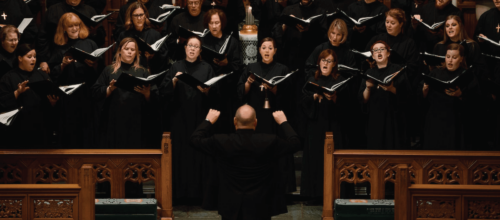Deep dives into popular Lutheran hymns
“Savior of the Nations, Come” includes longing or expectation for a Savior; the work of Jesus and His triumph over death; and life in the light of Christ. It is the appointed Hymn of the Day for the first Sunday in Advent in both the one and three-year lectionary.
This Parable of the Ten Virgins basis for Philipp Nicolai’s great hymn, “Wake, Awake, for Night Is Flying” (LSB 516). Known as the “King of Chorales,” this is the Hymn of the Day for the Last Sunday of the Church Year.
The precise motivation for Luther’s text is unclear, yet evidence exists that it spread quickly and gained notoriety in significant fashion. It was sung at the Diet of Augsburg (1555) and in all the churches of Saxony.
Theologically, this chorale is based on the work of the third Person of the Holy Trinity, the Holy Spirit (Ghost), who is expressly celebrated on the Day of Pentecost.
Based on Psalm 45, the hymn quickly became extremely popular in Germany and was used for a variety of occasions. The tune is believed to be a reconstruction of “Jauchzet dem Herren, alle lande,” Psalm 100, included in Wolff Köphel’s Psalter (1538).
The uplifting expression of faith and joy at Christ’s second coming in “The Bridegroom Soon Will Call Us” (LSB 514) by Johann Walter and Michael Praetorius reminds us that there is meaningful history in so many of our great Lutheran hymns.
Luther’s Reformation hymn, “Lord, Keep Us Steadfast in Your Word” (LSB 655) is one of his best known compositions. When it was published in 1542, it appeared with the subtitle, “A Children’s Hymn, to be Sung Against the Two Archenemies of Christ and His Holy Church, the Pope and Turk.”[1]
In 1523 Martin Luther wrote his first hymn for congregational use, “Dear Christians, One and All, Rejoice” (LSB 556). It appears as the first hymn in the first published collection of Lutheran hymns, Etlich Cristlich lider of 1523/24.
As the basis for “We All Believe in One True God,” Martin Luther used the first two lines of a single-stanza German medieval hymn first found with Latin and German words in 1417 and expanded it to three stanzas—individually paraphrasing each of the three articles of the creed.
One of Luther’s earliest compositions was “From Depths of Woe I Cry to Thee,” a paraphrase of Psalm 130 (Aus tiefer Not schrei’ ich zu dir, LSB 607). He wrote this hymn in 1523, around the time that he was revising the Latin Mass.
While it may be difficult to finalize and stop selecting hymns for your season, perhaps a place to start is with Martin Luther’s Christmas gem, “From Heaven Above to Earth I Come” (LSB 358).
